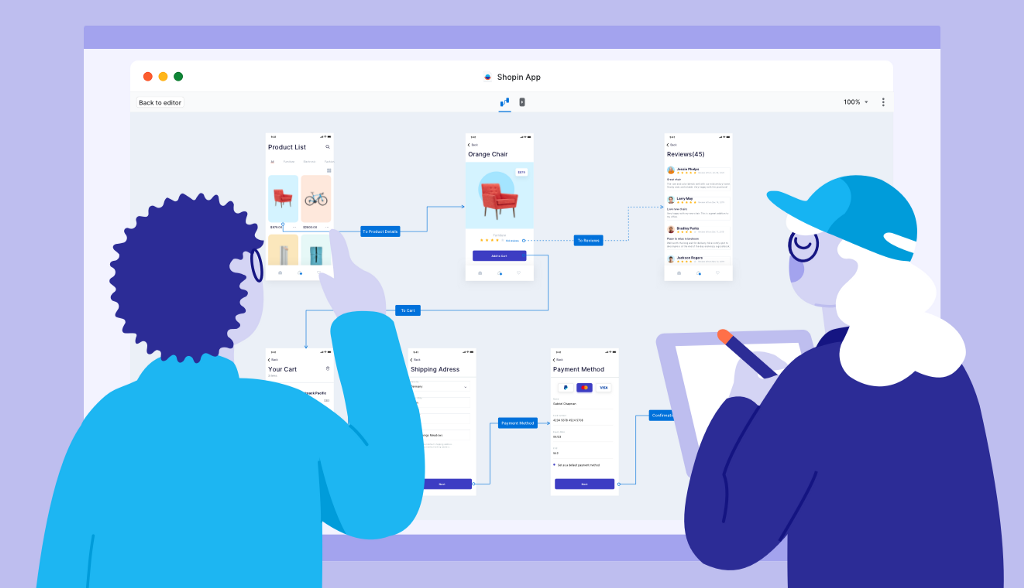
For most teams worldwide, synchronicity was traditionally perceived as a necessary ingredient for productivity and success. How could it be otherwise, in a world where aligning with team members has been synonymous to calendar invites, meeting rooms, and corridor chatter?
The 2020 pandemic brought asynchronous communication to the spotlight as teams started looking into ways to improve their working models and adapt to the new times.
While moving from a co-located to a remote and, subsequently, mixed working model, our team here at Overflow also trialed a few asynchronous communication practices to help the team embrace change during a time of crisis. In this article, we share some of our learnings and point out a few cases of how Overflow helped us make some processes even smoother for everyone involved.
Why go asynchronous?

For many managers, asynchronous working practices are perceived as something attached to remote work. In reality, they have applicability in all working models and team setups, and if applied correctly, they can yield multiple benefits. Here are a few we picked out from our own experience:
Fewer distractions: Asynchronous communication promotes the use of fewer meetings and instant messaging, allowing employees to achieve a status of deep work.
Increased adaptability: It’s easier for companies with asynchronous communication and collaboration practices already in place to switch between working models, for example, during times of crisis.
More recruitment options: Teams embracing asynchronous communication are more likely to feel comfortable recruiting employees from distant areas with seemingly incompatible time zones, thus having a wider pool of candidates to choose from.
Work-life balance: Employees in companies familiar with asynchronous communication can create their own schedule, as most of these companies have flexible working hour policies in place. This helps them balance between their private and professional life better and feel overall less stressed.
Less reactive decisions: Synchronous meetings unfold live, so participants need to often provide spontaneous answers or feedback. Asynchronous communication allows for more time to think or research, leading to better-informed decisions.
How to go about it?

Like with any other change, the introduction of asynchronous communication practices might require some getting used to. The ideal scenario is to start slow and let things play out organically before you decide what to keep and what to drop. If time, however, is not on your side, start by introducing small but critical changes to specific processes and progressively proceed to as much as your team can absorb without serious backlash. Here’s what we started from:
Set response window rules
While asynchronous communication implies that each employee is free to look at tasks and respond to emails when preferable to them, limits need to be set. A good way to go about this while actively involving the team and cultivating a sense of accountability is to work towards a mutually acceptable team agreement. That agreement should touch upon topics, such as preferred communication channels and expected response times, and should be accessible to anyone in the team, anytime. Test your initial agreement for a couple of months before evaluating how it can be further improved.
Stick to timelines
Make it clear from early on that, although the team’s schedule is flexible, timelines are not. If deadlines are missed often, make sure to conduct retrospective meetings to understand what’s wrong and improve your internal processes. If your organization works with employee performance indicators, make sure that a high timeliness rate becomes an official indicator of strong performance.
Minimize the number of meetings
Even in asynchronous teams, a small number of meetings per week is unavoidable, even if they exist solely to bring the team closer. However, make sure everyone understands that asynchronous culture considers meetings a secondary option — written feedback through email or comments takes precedence. Similarly, even before scheduling a meeting, it’s preferable that the team has already done pre-work on an individual level and there’s some feedback to start from, to maximize the output of your few precious get-togethers.
Provide meaningful feedback
One of the pros of synchronicity is that follow-up questions can be asked on the spot to achieve full alignment. With asynchronous communication, especially when big timezone differences are at play, poorly-worded feedback can become a huge bottleneck. Train your team with guidelines and examples of how to provide clear, well-targeted, and actionable feedback so follow-up questions are minimized. Encourage your team members to provide screenshots, examples, and context for more clarity.
Increase transparency
As your team members start working more and more asynchronously, it will become crucial that they have access to as much information as possible without asking around. Documentation is extremely important towards achieving that goal. Encourage your team not only to document as often as possible but also to update past documents with new information or data so that whoever reads through can instantly get up to speed. Lastly, remind your colleagues to always change the privacy settings of their documents so the whole team has viewing, commenting, and editing rights.
How can Overflow help?

In its essence, Overflow is a tool that allows individuals and teams to present, share, and receive design feedback anytime from anywhere. Particularly Overflow Stories can be a real asset in any asynchronous communication workflow, as it helps create self-guided tours that the audience can follow even without a presenter’s live input.
Besides that, there are specific examples where Overflow can be of particular help for asynchronous teams. Here are the ones we found the most useful:
Design critique
The most common use case for us, in which designers simply line up their artboards in a logical way in one or more boards and send a share link for feedback. Using share links and comments allows the team to start a conversation from anywhere, anytime. Very often, the team uses this as prep work for synchronous meetings, in order to minimize their length and maximize their effectiveness.
Early-stage ideation
It’s not an uncommon scenario for people to dismiss early ideas, simply because they have a hard time explaining them to others to get validation — asynchronicity can add to this struggle. We often use Overflow to quickly map our train of thought using simple shapes, connectors, and labels, in order to easily pick our colleagues’ brains. Anyone we share our idea with can leave feedback via comments whenever it works for them, so that we can spark a fruitful conversation before proceeding with any design or development efforts.
Design/user journey iteration
Good products need to improve constantly, iteration by iteration. When multiple people are involved in product design and development, asynchronicity can make teammates that are not involved on the daily feel they have missed minor iterations others worked on. Our team tries to keep everyone on the same page by documenting iterations in common share links, which everybody can access. There are many ways to go about it, from keeping one version per board, to using a mixture of comments and the version history of your share link.
Developer hand-off
Our team uses Overflow religiously for developer hand-offs, including all screens that need to be developed, as well as information on how they connect with each other. Make sure to use tags and text fields to provide more context where needed, as well as take advantage of the link to URL feature to include destination links to asset folders or design files, so all information is gathered in one place.
Mapping existing products
Documentation, as already mentioned, is of utmost importance for asynchronous teams. Overflow makes it super easy to map your digital product flows using only screenshots, allowing you to keep a detailed record of your app or website versions through time for everyone to see. This will also make it easier to evaluate them again in the future and put less effort into improving them.
Did you try to introduce any asynchronous processes in your workflow? Drop us a comment to let us know how it went to you and share your learnings!
Alternatively, tag us in your comments, posts, and stories @overflowapp on Facebook, Twitter, and Instagram.
Build meaningful design presentations and engage your audience in design critique